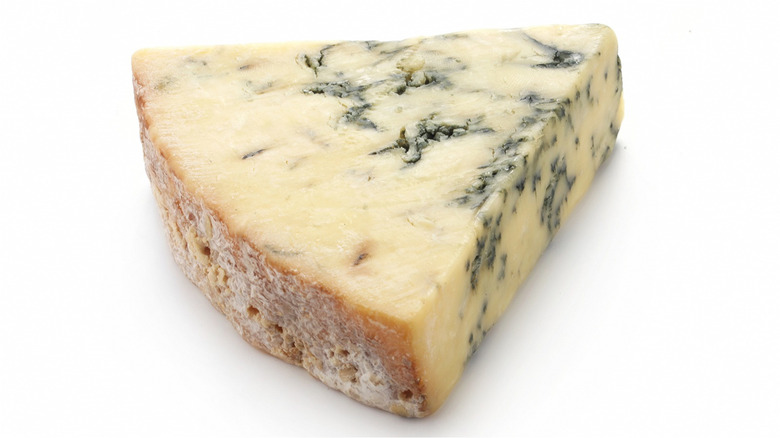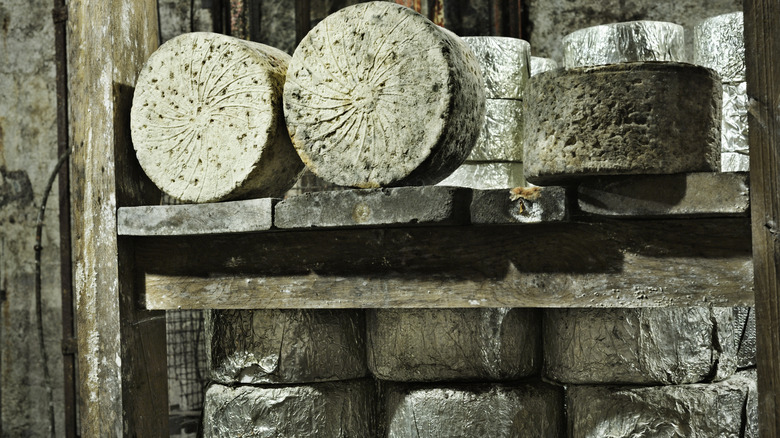The Weird Technique Used To Make Stilton Blue Cheese Mold
The process involved in making cheese is a wonderful blend of patience, food preparation, and science. There are some incredible techniques that are used by experienced cheesemongers in order to create your favorite cheeses. For mozzarella, heating cheese curds at just the right temperature and adding citric acid and rennet help to form the ideal pH balance so that the makeup of the creamy concoction is perfect to knead and stretch for the ideal texture. Lovers of pungent cheeses are surely wondering how exactly a Stilton blue cheese gets its signature blue lines throughout. Well, it turns out it just requires a little poke from a special cheese needle.
For the process of making Stilton blue cheese, it is actually made using a type of mold called Penicillium roqueforti which is the same mold that produces penicillin, as per Week&. This fungus works to degrade the protein molecules in the cheese to give it a unique creamy texture as well as break down the fat that allows for a more pungent smell and sharp taste. However, this mold needs oxygen to be able to spread throughout the solid cheese form. To create space for oxygen to pass through, cheesemakers pierce the cheese with a long stainless steel needle. That way, the mold can spread and form the blue veins that we are so familiar with, according to the Smithsonian Channel.
How Stilton blue cheese is made
A British staple, Stilton blue cheese is made in only six specialized dairies in the UK and takes about nine weeks to completely make. In the very early stages of the process, milk from local dairies is mixed with bacteria, and milk clotters such as rennet, and the special mold spores Penicillium roqueforti, as per the Stilton Cheese Makers Association. The whey is separated from the curds and excess moisture is left to drip out. These crumbly curds are then placed into special Stilton molds and left in an environment configurated to the ideal temperature and humidity levels. Although the blue mold is in the cheese mixture it is actually not encouraged to grow in the early stages. For the next five weeks, the cheese is kept in a temperature-controlled room where it is left to ripen.
After the five-week-long ripening period, this is when cheesemakers want the mold to form and spread throughout the cheese. Using the stainless steel needle cheesemakers pierce the round of cheese on an angle to create air holes perfect for oxygen to enter the cheese and mold to form. This is when the characteristic blue veins will start to set in and the cheese to become more creamy and pungent. Before hitting the shelves, each wheel of cheese is inspected by a professional cheese grader who determines whether it is of top quality enough to be deemed a Stilton cheese. Otherwise, it is considered just a blue cheese.

